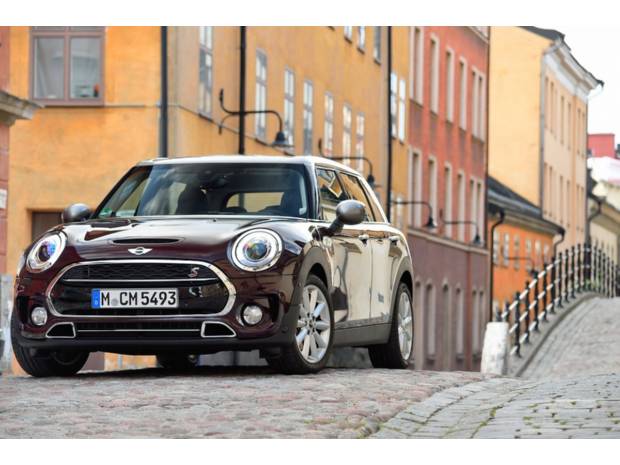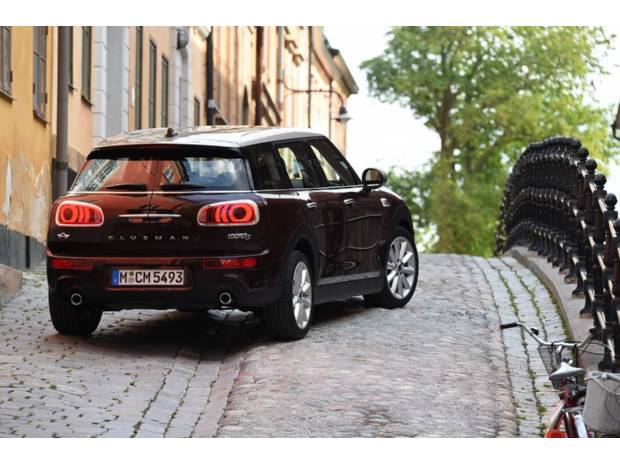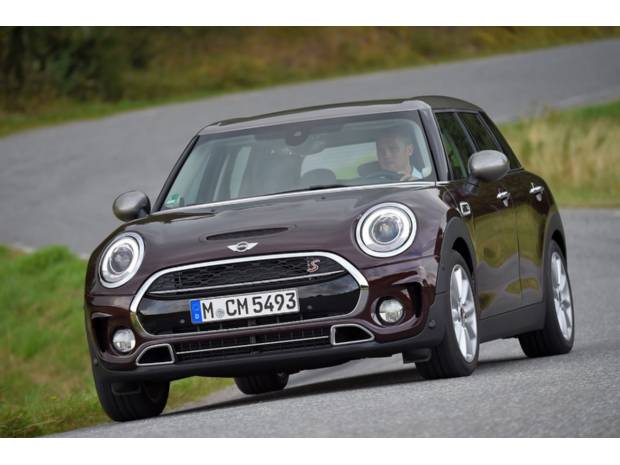Advance to compact cars. Is this Mini too big? The new Mini Clubman is no longer a Mini - at least not in terms of size: For the Combi, longer by 30 cm as previously, the brand is growing permanently out of the small car format. What is the difference between Beetle and Mini? Quite simply: the Beetle it was then: He runs and runs and runs. When Mini on the other hand today: It grows and grows and grows. Now another step: The new Clubman, officially the combi version of the popular Brittan BMW has become longer by outrageous 30 centimeters. Thus it should be disallowed by law, the name "Mini". A Maxi course he is still not so; rather something in between. This "Medi" So now measures 4.25 meters, one should read and laugh: A Compact Mini.
Also in the width of the Kombi has quite get bacon on the hips, is now 1.80 meters wide and thus a calculatory rich 1 whole millimeter thicker than the measure of all (compact) things, the VW Golf. Oha - but these are statistical gimmicks. One thing is certain: Without market research BMW-Mini would not have caused this, so demand has to be there.
This mini will be kicked
The considerable extra space comes in the interior: This is also due to the changed riding position: the passengers to rest a bit deeper than before. Even the trunk earned a volume 360-1250 liters finally its name. For the doorway Mini has come up with a small gimmick: For the Mini Clubman want to be literally kicked namely. Well, almost: with a sweep of the foot under the bumper, you first open the right, the second works the left door and opens the hatch completely. Because the Clubman now has two rear doors. So the practical magic is already over: An automatic closing of the doors is not in the program.
Piano lacquer and chrome plastic
Mini tried in other ways to go beyond themselves: They made an effort to make us forget the material and processing sins of the past in the interior. The dashboard now has a clasp of piano lacquer, top-placed parts are foamed and aluminum applications make the good first impression completely. Small weaknesses still remain: The Driving Experience Control feels kinda fiddly and not locked so sick one, as we expect that in a premium vehicle. After all, cost the giant baby as the Cooper S with automatic transmission at least 29,450 euros. Even the hard plastic area around the gear selector lever around just looks cheap - and the chrome rings around the round intruments and the ventilation elements are of course not made of chrome, but plastic. Keeping Up Appearances? Waiting.
Funny illuminated ring and infotainment Pizza
Let us put ourselves in everyday mood and check the combination of its practicality: Who has a stocked by practitioners à la Golf Estate is located in the interior, forgets that he is dealing with a Mini. Lifestyle and sometimes something intrusive "I- am-different" -Geplapper belong to the BMW subsidiary, as well as the air scoop on the bonnet at the S and John Cooper Works versions.
This includes a light ring that runs around an infotainment Pizza and funny changes colors. Most buyers (inside) will love it; so we resist us more Mäkelei. The same applies to the colorful mix of aircraft operating toggle switches, conventional buttons and the BMW iDrive knob. After work the interplay of all these elements easily. No doubt: In the Connectivity and handling BMW is ahead of the competition. That's when Mini otherwise, even if the appeal is clearly pubescent. That a blind-spot assistant is absent in the helpers, is due to technical reasons: The UKL platform apparently no longer gave forth. The next facelift will change the most.
When driving a Mini is a mini
When driving there is no more illusion, only His: The longer wheelbase of the Clubman is sovereign on the road, the more rigid by additional struts body swallows ground unevenness better, and scrapes the curves better. The new chassis is reflected wacker, especially the adaptive dampers (but cost 500 euros extra) have a positive effect during the vote of the vehicle. You avoid the Mini Clubman hard cushioning. The driving programs Mini is again fun: The driver can choose between "maximum go-kart feeling" (according to Display when "Sport") or ecologically cautious ("green") - probably the least likely used settings on Mini. Although the comfort spreading is palpable, the animals will always remain natural. This means: Always the steering remains accurate, are also clear feedback, and the chassis feels sturdy.
The Mini's engineers have made an effort to make the new Clubman for slalom artists. That's well done, which can already be seen in a simple evasive maneuvers à la elk test. But a Frontriebler device also in the border area to its limit, even if it is mini. This means that slight understeering tendency and crisp punches of the front wheels during fast start on wet ground.
All turbocharged engines
Technically, the Clubman differs only marginally from the five-door variants and three. First, there are six turbo engines - three petrol and three diesel - available. It starts with a three-cylinder gasoline with 75 kW / 102 hp and ends with the Cooper S with 141 kW / 192 hp. He is tentatively the alpha animals of the family, by next year, the John Cooper Works variant appears. The S consumed with automatic laboratory 5.8 liters per 100 kilometers, in reality likely consumption to 8 liters to go. After 7.1 seconds reaches the automatic version Highway pace and as top speed is Mini 228 km / h on.
Due to the overboost function, the torque can briefly increase maximum from 280 to 300 Newton meters. Since it already rests at 1,250 rev / min in full, it also comes with the manual switch before relaxing.
The diesel remain frugal
Those who opt for one of the four-cylinder engines, can decide (2,000 euros extra charge) between the six-speed manual transmission and the eight-speed automatic. The complements the Cooper S turbocharged four-cylinder as well as his brothers pretty good, even if the athletic savvy driver will always resort to the manual transmission. The start-stop system works very smoothly with the automatic transmission and also robs the motor little temperament. Bottom line, the Japanese automatic than the ZF counterpart, which is also installed in vehicles with front wheel drive transverse kicks better. Who holds the Mini still stubbornly for a small car, will accept the latest in consumption that not only the silhouette, but also the weight has increased. Only the diesel is - like its predecessor - encouraging frugal: 116 PS are sufficient for the approximately 1.3-ton Clubman, the order according to the standard (theoretically) consumes 3.8 liters per 100 km. The two more powerful diesel engine (150 or 190 hp) does not swallow much more.










EmoticonEmoticon